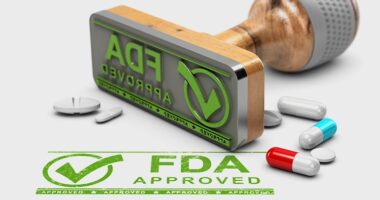The Aftermath of a Proposed Megamerger: What’s Next for Pfizer?
In the wake of not realizing a possible combination with AstraZeneca, Pfizer faces a fundamental question: what is next for the company?
When Pfizer announced in late May that it would not make a formal offer to acquire AstraZeneca following AstraZeneca’s decision to reject Pfizer’s non-binding $119-billion proposal, it raised some basic questions: why did the megamerger not come to fruition and what is next for Pfizer? Frank D’Amelio, executive vice president of business operations and chief financial officer of Pfizer, who spoke June 11, 2014, at the Goldman Sachs 35th Annual Global Healthcare Conference, which was held in Rancho Palos Verdes, California, provided insight into the proposed combination of the two companies and highlighted some key elements of the company’s strategy.
The why and why not of the AstraZeneca combination
Although a possible combination with AstraZeneca did not come to fruition, D’Amelio said the rationale for such a combination was to build on the strength of Pfizer, saying that a combined company was an opportunity to make “a strong hand stronger.” To that end, he pointed to three key reasons that were behind Pfizer’s interest in combining the two companies. “From our perspective, there was really three fits relative to AstraZeneca,” he said. “There was a strategic fit, there was an operational fit, and there was a financial fit.” Strategically, he said that the combination of the two companies’ portfolios would have created value by which “one plus one could be more than two.” From an operational perspective, he said that Pfizer could have very efficiently integrated AstraZeneca based on how Pfizer is organized and how AstraZeneca’s assets would have fit into the company’s structure. And lastly, he pointed to the financial fit. “It was really a lot to do with taxes and the ability to be in a tax environment with a lower statutory tax rate and a territorial tax system and some of the other benefits of the UK tax code,” he said.
 |
| Frank D’Amelio Executive Vice President, Business Operations and CFO Pfizer Inc. |
Pfizer’s pursuit of AstraZeneca ended on May 26, 2014, when Pfizer announced it would not make a formal bid to acquire AstraZeneca, a move it had to make in line with UK takeover rules that required the company to either make a formal offer to AstraZeneca or announce that it was not making an offer following Pfizer’s non-binding $119-billion proposal to combine the two companies. Pfizer’s public pursuit of AstraZeneca began in late April 2014, when Pfizer reported it was interested in acquiring AstraZeneca and that it had made a non-binding proposal of interest to the board of AstraZeneca on January 5, 2014 for a combination of cash and shares of £46.61 ($76.62) per AstraZeneca share or approximately $100 billion, a proposal that was rejected by AstraZeneca. In early May 2014, Pfizer raised its proposal to £50.00 ($84.47) per share or approximately $106 billion, which was also rejected by AstraZeneca. Pfizer’s final proposal came in mid-May when the company raised its proposal to £55.00 ($92.53) per AstraZeneca share (based on the closing price of Pfizer shares on May 16, 2014) or approximately $119 billion and increased the cash portion of the deal to 45%. AstraZeneca rejected this proposal in what became Pfizer’s final proposal on the basis that it did not fully value the company, citing the strength of its pipeline and strong near- and mid-term growth prospects. AstraZeneca also raised concerns over reductions in research and development potential and capabilities that would result from a megamerger and the tax-driven inversion structure of the proposal. Following AstraZeneca’s rejection, under UK takeover rules, Pfizer had until May 26, 2014 to make a formal bid for AstraZeneca or announce that it would not make an offer, and Pfizer decided not to make an offer.
“In terms of why not, why didn’t it happen, I think in a word it was price,” said D’Amelio. He added that for other items or other issues that were raised during the negotiations, “I think we were able to adequately effectively address those. I think when all was said and done, the reason the deal didn’t get done was because of price,” adding that Pfizer has demonstrated and will continue to be a “disciplined” acquirer as it related to what the company would pay in a possible deal. D’Amelio did not comment whether Pfizer would revive its pursuit of AstraZeneca. Under UK takeover rules, following Pfizer’s announcement not to make a formal bid for AstraZeneca on May 26, Pfizer has to wait until November 26, 2014 (180 days after its announcement not to make an offer) to make another proposal to AstraZeneca or could do so earlier on August 26, 2014 (90 days after its announced decision not to make an offer) only if AstraZeneca invited the proposal.
What is next for Pfizer?
|
“We’re agnostic to size. Size isn’t what drives our decision-making.” —Frank D’Amelio, executive vice president of business operations and CFO of Pfizer |
So with its pursuit of AstraZeneca ended for now, the question for Pfizer is what is next? Will the company look to other acquisitions, stay pat, or what is its focus going forward? D’Amelio did not comment specifically on future moves or strategy, but offered an overall perspective. “We’re agnostic to size. So what does that mean? If we think there’s an opportunity to create shareholder value by getting bigger, then we’ll do that. If we think there’s an opportunity to unlock fair value, to create shareholder value, by getting smaller, then we’ll do that,” said D’Amelio. As examples of when the company reduced its size through divestments, he pointed to the spin-off of its animal-health business Zoetis in 2013, the sale of its nutrition business to Nestlé in 2012, and the sale of its Capsugel manufacturing unit to KKR & Co. in 2011. “Size isn’t what drives our decision-making,” said D’Amelio. “Our compass has been and will continue to be how do we create, how do we generate, incremental shareholder value?”
To that end, D’Amelio pointed to several positive growth drivers for the company, which include continuing revenue ramp-up of several recent key new products. These products include: Eliquis (apixaban), an oral anticoagulant developed with Bristol-Myers Squibb; Xeljanz (tofacitinib citrate) for treating adult patients with moderately to severely active rheumatoid arthritis; Xalkori (crizotinib) for treating patients with locally advanced or metastatic non-small cell lung cancer that is anaplastic lymphoma kinase (ALK)-positive as detected by an FDA-approved test; and Inlyta (axitinib) for treating advanced renal cell carcinoma. Sales of Xeljanz (first approved by FDA in December 2012) were not separately reported in 2013 but included as part of the company’s overall alliance revenues, and Xalkori (first approved by FDA in August 2011) had 2013 sales of $282 million. Inlyta (first approved by FDA in January 2012) had 2013 sales of $319 million, and Xeljanz (first approved by FDA in November 2012) had 2013 sales of $114 million (1).
In terms of key pipeline candidates, D’Amelio pointed to palbociclib, which is an ER-positive, HER2-negative drug candidate to treat breast cancer, now in Phase III development. Table I outlines Pfizer’s late-stage drug candidates (new molecular entities, both small molecules and biologics) and vaccines as of May 8, 2014 (2). In terms of the rest of the pipeline, he pointed to several products: Prevnar 13 Adult (pneumococcal polysaccharide conjugate vaccine [13-valent, adsorbed]), the company’s well-established vaccine now also being evaluated for vaccine-type community-acquired pneumonia in adults 65 years of age or older; the anti-cholesterol drug bococizumab, which is in Phase III development (see Table I); earlier-stage assets in the company’s immuno-oncology portfolio; biosimilars; additional indications for Xeljanz; and vaccine candidates to respectively treat meningitis B and Staphylococcus aureus. In Mid-June 2014, Pfizer submitted a biologics license application to the US Food and Drug Administration for MnB rLP2086MnB, a vaccine to treat adolescent and young adult meningitis B (see Table I), and 4-antigen Staphylococcus Aureus Vaccine (SA4Ag) is in Phase II development. Overall, as of May 8, 2014, Pfizer had 84 drug candidates in its pipeline, which included 62 new molecular entities, 17 additional indications, and five biosimilars. In terms of phase of development, the company had 35 drugs in Phase I, 23 in Phase II, 20 in Phase III, and six in registration, inclusive of both new molecular entities and new indications (2).
| Table I: Pfizer’s Late-Stage Pipeline of New Molecular Entities (Small Molecules and Biologics) and Vaccines (as of May 8, 2014).
|
||||
| Compound | Mechanism of action | Indication | Phase | |
| Cardiovascular and metabolic diseases | ||||
| bococizumab | PCSK9 inhibitor | Hyperlipidemia | Phase III | |
| ertugliflozin | SGLT-2 Inhibitor | Diabetes mellitus-Type II | Phase III | |
| Neuroscience and pain | ||||
| Remoxy (oxycodone, extended-release) | Mu-type opioid receptor (MOR-1) agonist | Severe pain (US) | Registration | |
| ALO-02 (oxycodone hydrochloride and naltrexone hydrochloride extended-release) | Mu-type opioid receptor (MOR-1) agonist | Severe pain | Phase III | |
| tanezumab | Nerve growth factor inhibitor | Osteoarthritis signs and symptoms (on clinical hold) | Phase III | |
| Oncology | ||||
| dacomitinib | Pan-HER Inhibitor | 1st-line EGFR mutant non-small cell lung cancer | Phase III | |
| inotuzumab ozogamicin | CD22-targeted cytotoxic agent | Acute lymphoblastic leukemia | Phase III | |
| palbociclib | CDK 4,6 kinase inhibitor | 1st line advanced breast cancer* | Phase III | |
| Vaccines | ||||
| MnB rLP2086 | Prophylactic vaccine | Adolescent and young adult meningitis B | Registration** | |
| Rare disease | ||||
| tafamidis meglumine | Transthyretin (TTR) dissociation inhibitor | Transthyretin familial amyloid polyneuropathy (US) | Registration | |
| Other | ||||
| Conjugated estrogens/bazedoxifene | Tissue-selective estrogen complex | Menopausal vasomotor symptoms and osteoporosis (EU) | Registration | |
| Viviant (bazedoxifene) | Selective estrogen receptor modulator | Osteoporosis treatment and prevention (US) | Registration | |
| EGFR is epidermal growth factor receptor PCSK9 is proprotein convertase subtilisin/kexin type 9 SGLT-2 is sodium glucose co-transporter 2 *Palbociclib is also in Phase III development for high-risk early breast cancer and for recurrent advanced breast cancer. **Pfizer submitted a biologics license application for MnB rL2086 to FDA in mid-June 2014. Source: Pfizer |
||||
Another issue raised at the investor conference was whether Pfizer’s decision to reorganize its commercial structure and separate its innovative products and established products into distinct businesses might portend a potential split of the company. The first quarter of 2014 was the first quarter in which Pfizer reported its results using its new commercial structure that consists of three main business areas. The Global Innovative Pharmaceutical (GIP) business consists of medicines within several therapeutic areas (immunology and inflammation, cardiovascular/metabolic, neuroscience and pain, rare diseases, and women’s/men’s health) and which Pfizer generally expects to have market exclusivity beyond 2015. The Global Vaccines, Oncology and Consumer Healthcare (VOC) business focuses on the development and commercialization of vaccines and products for oncology and consumer healthcare. The Global Established Pharmaceutical (GEP) business includes the brands that have lost market exclusivity and, generally, the mature, patent-protected products that are expected to lose exclusivity through 2015 in most major markets and, to a much smaller extent, generic pharmaceuticals. Additionally, GEP includes sterile injectable products, Pfizer’s biosimilar development portfolio, and its product collaborations with Mylan Inc. in Japan, Zhejiang Hisun Pharmaceutical Co. Ltd. in China, and Laboratório Teuto Brasileiro S.A. in Brazil.
“We’ve made no decisions regarding whether or not we’re going to split up the company,” said D’Amelio. He explained that the new structure was intended to improve the foundation upon which the different businesses (GIP, VOC, and GEP) operate. “In my mind by doing the multiple business units, it makes what’s a $50-billion business more manageable,” said D’Amelio. “It makes us more nimble, more focused.” For example, he explained that the vaccines and consumer healthcare segments of the VOC business have “unique go-to-market strategies” that are distinct than working with primary care physicians or specialists and that with their smaller size, it made sense to separate them from the larger GIP business.
D’Amelio explained that the GEP business, which some might consider would be a candidate for spin-off due to declining sales due to loss of exclusivity (LOE), has varied growth prospects depending on the segment within GEP. Overall, he said commodity generics represent less than 10% of the GEP business, and while certain segments show declining revenues, other segments have positive growth. Showing declining sales within the GEP business are products that have lost patent protection or products that are approaching LOE in developed markets. On the upside, however, are the products in the GEP business sold into emerging markets; products from Pfizer’s collaborations, namely Hisun in China, Mylan in Japan, and Laboratório Teuto Brasileiro in Brazil; and sterile injectables.
D’Amelio recognized that the company faces “significant LOE and co-promotion expiration headwinds,” which total approximately $3 billion in 2014 and which will continue in 2015 and 2016. Although this will cut into growth, he said that ultimately sound operational performance and progress will drive growth. “The absolute best way to create value going forward is through operational excellence. Operational cause will equal financial effect,” he said.
References
1. Pfizer, 10-K Annual Report and Filing 2013 (US Securities and Exchange Commission).
2. Pfizer, “Pfizer Pipeline as of May 8, 2014,” http://www.pfizer.com/sites/default/files/product-pipeline/May%208%2C%202014%20Pipeline%20Update_Final_to%20BT.pdf, accessed June 12, 2014.






